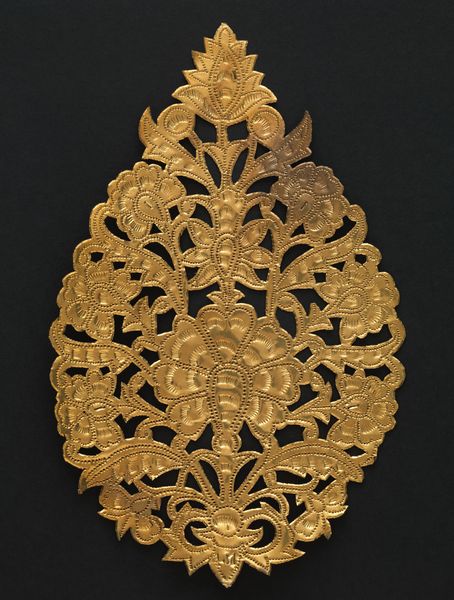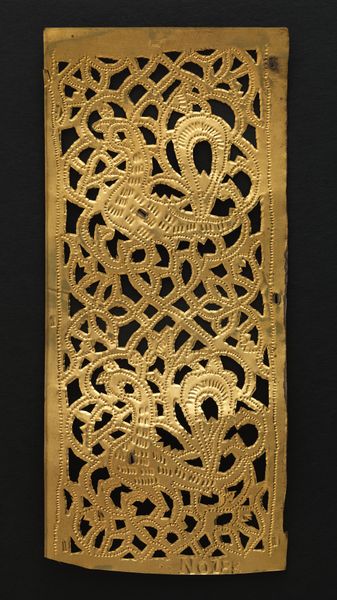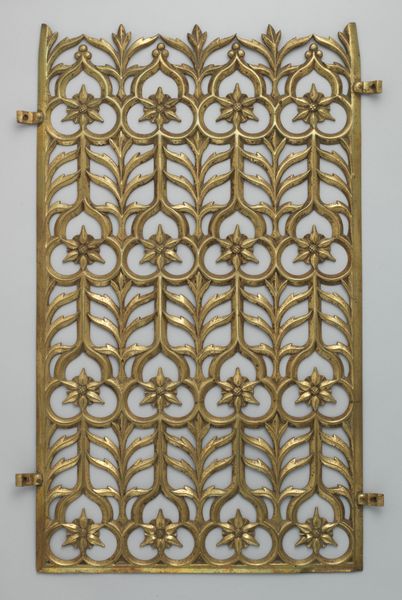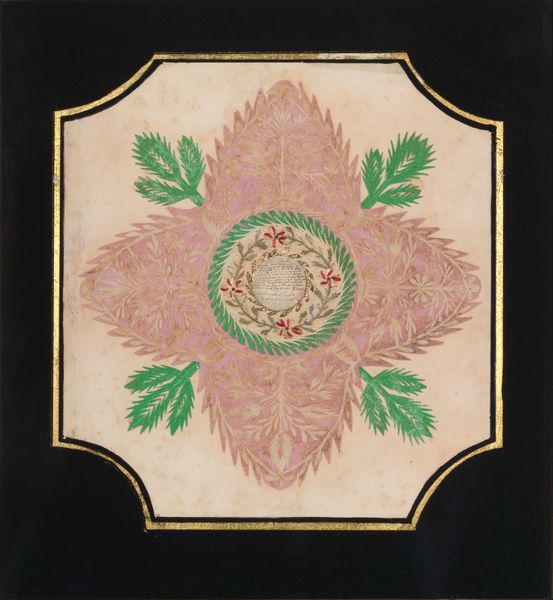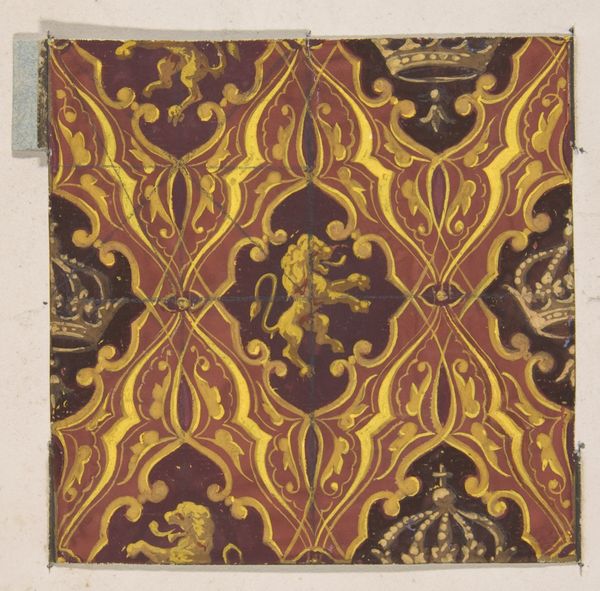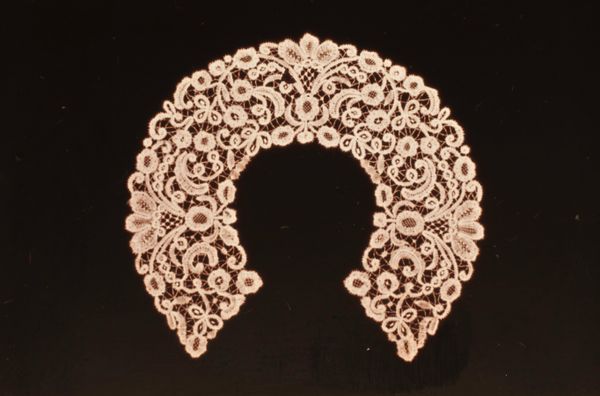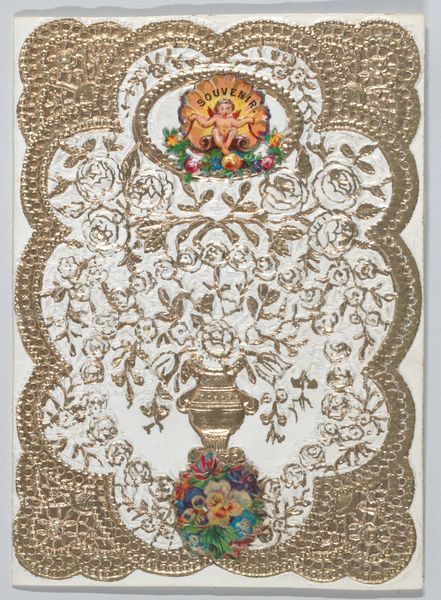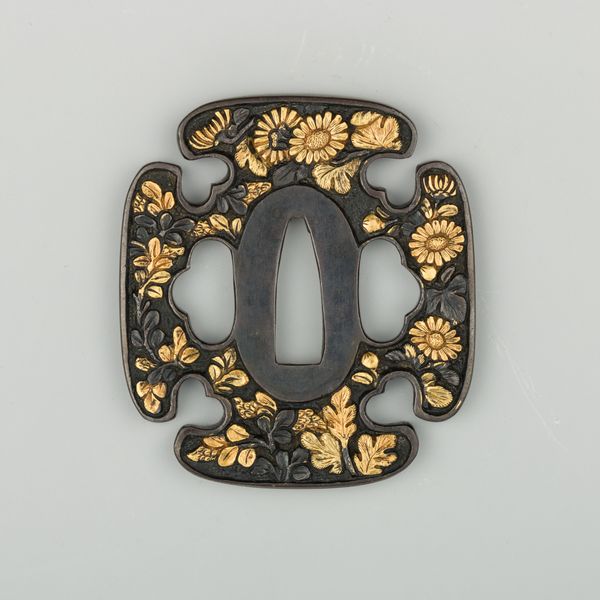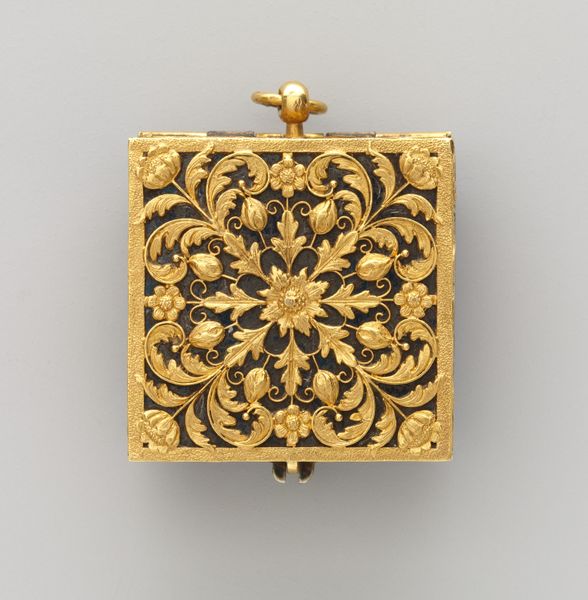
metal, relief
#
metal
#
pattern
#
relief
#
geometric
#
islamic-art
#
decorative-art
Dimensions: H. 6 1/8 in. (15.6 cm) W. 6 7/8 in. (17.5 cm)
Copyright: Public Domain
Editor: This is "Cutout" by Lockwood de Forest, made sometime between 1867 and 1917. It's a gold-colored metal relief, and the design is really intricate. It has this dazzling quality, a bit like something you'd see in a dream. What do you see in this piece? Curator: Immediately, I am drawn to the symbolic language at play. Notice the careful repetition of geometric forms and floral motifs. Do you recognize a cultural tradition being evoked? Editor: Islamic art? It's one of the tags… but how does the symbolism work here? Curator: Indeed. Islamic art often employs geometric patterns to represent the underlying order of the universe and the unity of God. Floral motifs evoke paradise, a concept rich in symbolic meaning across cultures. It speaks of renewal, beauty, and the divine presence in nature. Editor: So the artist isn't just decorating, they are communicating beliefs? Curator: Precisely. The cutout form itself, think of filigree and screens, performs a sacred function to create division or privacy. Notice the two mirrored peacocks at the center; does that bring any association? Editor: Oh wow! They look like mirror images. Is that kind of mirroring a typical decorative technique in Islamic art, or does it point to something deeper? Curator: It’s not necessarily "typical," but symmetry is a key organizing principle which could denote balance and harmony. These peacocks become metaphors for duality and reflection, echoing our own capacity for self-awareness and spiritual insight. But why these birds instead of something else? Editor: Interesting! It definitely makes me think differently about decorative arts – it isn't only aesthetics, it also expresses deeper connections between culture and human experiences. Curator: Exactly! Through visual symbols, de Forest isn't just making an aesthetic statement, but also opening up cross-cultural dialogues about history, belief, and the power of shared human experience.
Comments
No comments
Be the first to comment and join the conversation on the ultimate creative platform.
